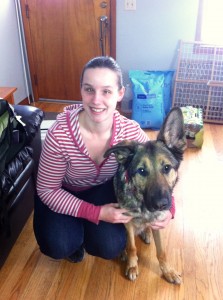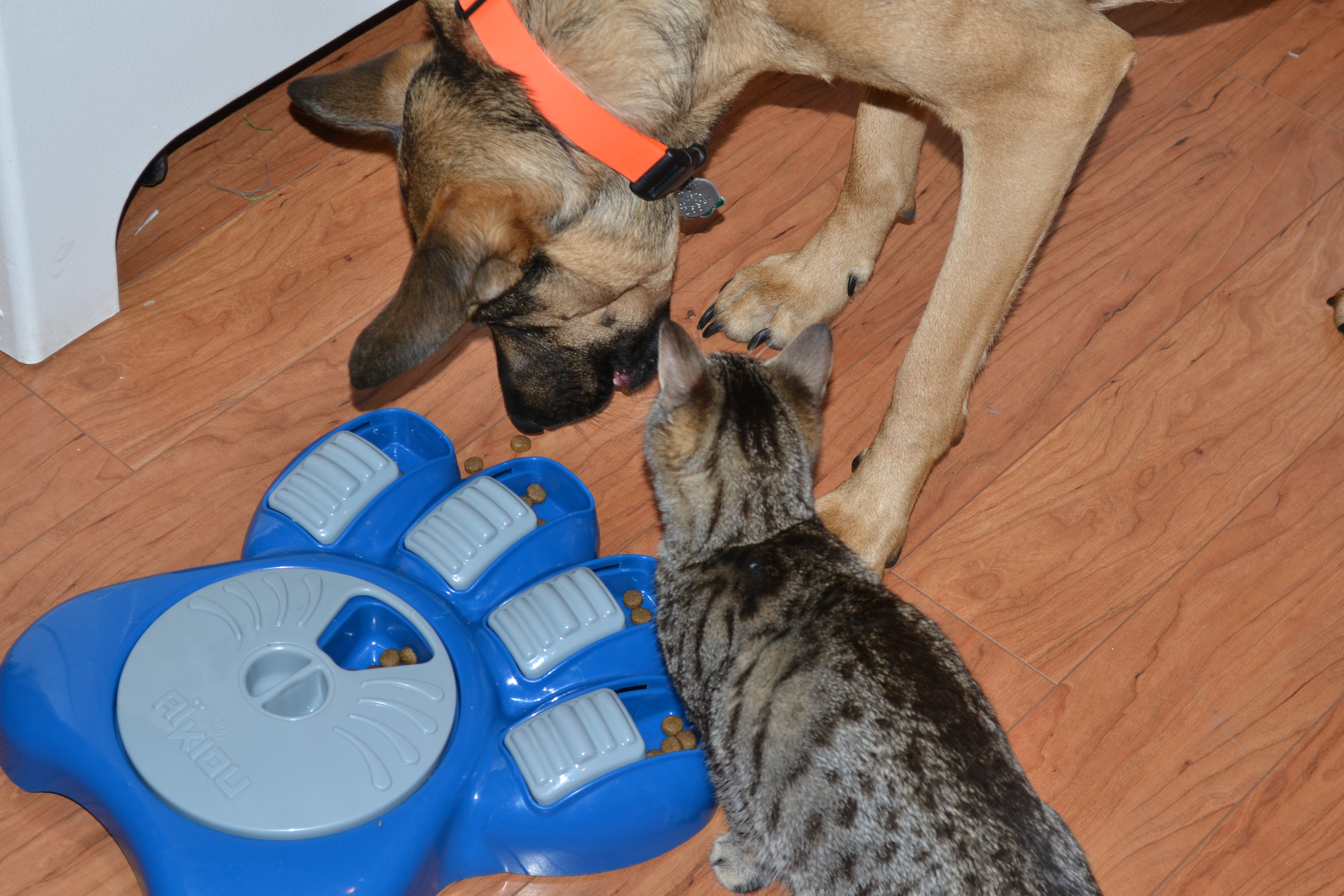About a month ago I received an email from one of my readers that said
I just wanted to thank you for this site. I am crossing over. I am blind and am on my third guide dog. I received my first two from a program. They were lovely dogs, but they taught using training collars and corrections, and I have really struggled to transition since that was what I first learned. I wish he could understand ‘I am sorry’, but I am doing all I can to fix it.”
So I thanked her and asked if she’d be interested in sharing her story and much to my delight, she said yes! I am very excited that she has allowed me to share her story with my readers. I hope this story inspires others who are, or on the verge of, transitioning!
Here is Meghan Whalen’s story:
Service Dog Training Transitions
 How did you train your first dog?
How did you train your first dog? I got my first dog when I was twelve, and I trained him with food reward, but I also did a lot of pushing on his rump to make him sit, pulling his legs out to make him down etc. I had no training and just was kind of winging it. He learned all I taught him, but I later noticed that he responded best to what I had taught him without physically manipulating him. He enjoyed the “tricks” he knew much more, because I had rewarded him when I noticed him doing things I liked. I think it is also important to mention here that my first real training on how to train/handle a dog came when I was 17 when I got my first guide dog. I am blind, and I attended a 4 week residential program with my new dog. She was a very sweet German shepherd, and we were very closely bonded in a very short time. I was taught correction-based training methods using a chain training collar, and was instructed to give her a leash correction if it took her any time at all to comply. As a result, leash corrections became my knee jerk response. I came home with my super trained dog. I came home to my first pet dog, the terrier I had trained when I was twelve. I took him out, bought him his own little chain training collar and introduced him to corrections. For the first time, I had a dog who could heel well on leash anywhere we went…but I also had a dog with broken up hair around his neckline and a depleted enthusiasm for his walks.
Where did you get the dog that helped you cross over?
It was a process over several dogs. I got my first puppy as an adult my freshman year in college. Mazda is a 5 lb rat terrier, and she has been trained on a flat collar with food reward. I began to understand the importance of positive training for pet dogs. I have trained two other terriers since then and used all positive methods with them as well. The dog who really got through to me, though, was my current guide dog. I have raised and trained him from 12 weeks. I started him on a combination of negative and positive reinforcers. He responded well for the most part. When he was about a year and a half, I began training service dogs, too. I learned how to keep things positive when teaching them to retrieve dropped objects etc. I did a lot of imprinting on them as young puppies. Since my guide, Dayton, hadn’t been imprinted, those methods didn’t work on him. I took a break from trying to get him to do service work, and then one day, I tried some shaping work with him, and in ten minutes, I had him picking up a training dumbbell. In ten more minutes, I had him picking up anything I asked him to get. A few more short sessions had him pushing buttons with his nose, helping me take off my jacket and opening and closing cabinets. Leash corrections hadn’t yielded any results when I had tried to teach him the same behaviors. They had just lessened his trust in me and increased my frustration. After the shaping exercises, we were joyful together and had a new level of trust and connection.
What happened that made you think about the methods you were using?
Some of it, as I said before was how easy it was to teach Dayton to do what I would like using shaping. More of it was seeing his anxiety go down. Dayton was attacked by a loose dog back in December, and he became much more fearful. He started barking and growling at strange dogs and became overly protective of our home. Correcting him with a chain training collar or a prong collar just amped him up more. I was adding anxiety to his days. I was punishing him for being afraid, and I felt like a terrible person once I realized what was going on.
How has the transition gone? Has it been difficult?
The results have made it very easy, but my knee jerk response is still the leash corrections. I am finding it difficult to rewire my brain and think about my own reactivity. I have been struggling with my emotional responses to his frustration, but slowly, we are understanding one and other.
What are some major differences in your dog’s behavior that you have noticed?
He is much more relaxed and has much more positive interactions with his environment. He is constantly trying new things to try to figure out what I want from him.
For someone that wants to try to crossover, where should they start? Research? Observing? Attending a class?
I honestly think the best place to start is to meet one on one with a positive trainer to work on something you have been struggling with with your dog. Seeing the joy and understanding and security that will come to him when he realizes that corrections are not part of the package will be enough for most people, I would think. I have also read a lot of books and have attended obedience classes with my dogs. The best thing for me was succeeding in teaching my dog something new that I couldn’t teach through negative/traditional training methods. Most of my discoveries were a result of research, but I think I would have made more progress if I had started working with a positive trainer sooner.
Any other notes for others to know?
If you get frustrated, if you slip up and correct your dog, forgive yourself and move on. Your dog will forgive you, too. Pay attention to how you are feeling. Keep sessions short when you are learning the new methods, because you may grow frustrated which will cause your dog to become stressed. Remember that dogs are here to share their lives with us, too. We do not just share our lives with them.
 How did you train your first dog?
How did you train your first dog? 


